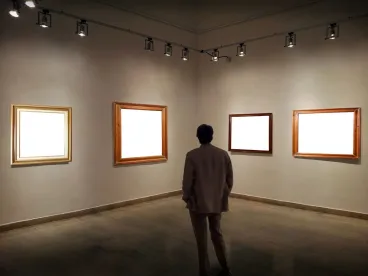UNITED STATES
SCOTUS Will Hear Appeal by German Museums over Jewish Heirs’ Claims that the Sale of the Guelph Treasure Was a Genocidal Taking
In a lawsuit filed in 2015, Jewish heirs of German art owners who sold the Guelph Treasure (gilded German reliquaries dating back to the 11th to 15th centuries) to the Nazi-controlled Prussian government in 1935, claim that the sale was a “genocidal taking.” The heirs seek restitution of the reliquaries from the Applied Arts Museum in Berlin, which are overseen by the Prussian Cultural Heritage Foundation (SPK). SPK unsuccessfully argued before the district court and a federal appeals court that this case should be dismissed on the grounds that U.S. courts cannot hear lawsuits against foreign governments and their agencies. Following a recent filing by the U.S. Solicitor General, the U.S. Supreme Court accepted an appeal by the German museums on the grounds that the sale was a domestic seizure and that the heirs failed to make the case that the forced sale was a violation of international law. The attorney for the heirs called the U.S. government’s position “shocking” and a departure from U.S. policy since it means that the forced sale of Jewish property in Nazi Germany did not amount to a violation of international law. Oral arguments are expected between December 2020 and February 2021.
-
The Art Newspaper: U.S. Supreme Court agrees to hear Berlin museums’ appeal in lawsuit over restitution of medieval treasures to Jewish heirs
-
The Art Newspaper: U.S. government recommends that the Supreme Court hear German museums’ appeal on Guelph Treasure claim
Virginia’s Capital City Removes Monuments Honoring Virginia’s Confederate Past. Two Statues of Robert E. Lee Are Caught in a Legal Battle.
Controversial monuments are being taken down in Richmond, Virginia, once the capital of the Confederacy. Following weeks of nationwide protests in the wake of the death of George Floyd and Virginia Governor Ralph Northam’s instructions to the state’s Department of General Services to remove the statue “as soon as possible.” But the prominent statue of Robert E. Lee, commander of the Confederate Army, remain – arguably the most controversial of the Richmond monuments – as it is embroiled in a legal battle over a deed the state signed when it accepted the statue. Specifically, when the state took the property, it promised the local landowners that it would keep the statue in perpetuity. The court is to decide whether the century-old agreement is enforceable. Another Lee statue remains in place in Charlottesville, the object of another legal battle focusing on whether state law prevents localities from removing Confederate monuments. Virginia state law changed this past April, allowing the localities to do just that. And yet, due to a permanent injunction issued last year, the parties are in limbo until the court lifts the injunction.
Albuquerque Statue Honoring Conquistador Temporarily Removed after Militia Member Opens Fire on Protesters Attempting to Remove It
La Jornada is a controversial monument on the grounds of the Albuquerque Museum that was the subject of protests by Native American activists, who attempted to remove the statue depicting Juan de Oñate, a Spanish conquistador, who ordered the murder of more than 800 indigenous people in 1599. A member of a militia group calling itself the “New Mexico Civil Guard” attacked female protesters and used pepper spray before finally opening fire and wounding a protester. Tim Keller, Mayor of Albuquerque, removed the sculpture temporarily as a matter of public safety, but lacks the authority to permanently remove the piece, which is part of the city’s public art collection under the city’s jurisdiction. Officials have expressed the desire for a public dialogue and a community-led process to determine the ultimate fate of the piece.
Southern District of New York Dismisses Artist Cady Noland’s Lawsuit over the Unauthorized Restoration of Her Log Cabin Sculpture for the Third Time in Four Years
For the third time since 2016, a federal court dismissed a lawsuit filed by U.S. sculptor Cady Noland, who argued that a German collector restored her Log Cabin work beyond recognition and created an unauthorized copy. In addition to raising “questions about what makes a work of art unique, what a collector is or isn’t allowed to do with art he owns, and at what point conservation becomes tantamount to creating an entirely new object,” the lawsuit presented complicated jurisdictional and choice of law questions. The sculpture was created in the United States and restored in Germany with American components. Ultimately, the court determined that (1) U.S. copyright protections do not apply because the restoration occurred outside of the country and (2) the Visual Artists Rights Act (VARA), which protects an artist’s moral rights in her work, did not apply because the work was created before the statute’s enactment. According to her attorney, Noland is contemplating an appeal. Whether an artist may sue a collector under U.S. law for conserving an artwork without permission remains an open question.
-
The Art Newspaper: Court dismisses Cady Noland’s lawsuit against collector and dealers who conserved Log Cabin sculpture
Second Circuit Stays 5Pointz Litigation to Allow Developers to File Petition for Certiorari to the U.S. Supreme Court
A lawsuit filed by aerosol artists who worked at the famed 5Pointz location in New York, which resulted in a $6.75 million judgment against the developer who removed their works in violation of the Visual Artists Rights Act of 1990 (VARA), is not over yet. After the trial court refused to set aside its findings, grant a new trial or reduce the damages, the developers successfully petitioned for a stay to file a petition for writ of certiorari to the Supreme Court of the United States. The developers’ arguments to the Supreme Court will focus on whether the “recognized stature” standard in VARA is unconstitutionally vague and whether the damages award was a due process violation.
-
Institute of Art & Law: 5Pointz case stayed pending petition to U.S. Supreme Court
Inigo Philbrick Charged with Fraud and Now in U.S. Custody
Notorious art dealer Inigo Philbrick, who is accused of defrauding art collectors, investors and lenders out of more than $20 million, was arrested by the FBI on the Pacific island of Vanuatu. He now stands accused of wire fraud and aggravated identity theft. According to the criminal complaint, Philbrick, who has been on the run since October, “made material misrepresentations and omissions to art collectors, investors, and lenders to access valuable art and obtain sales proceeds, funding, and loans … knowingly misrepresented the ownership of certain artworks, for example, by selling a total of more than 100% ownership in an artwork to multiple individuals and entities without their knowledge, and by selling artworks and/or using artworks as collateral on loans without the knowledge of co-owners, and without disclosing the ownership interests of third parties to buyers and lenders.” Prominent works involved in the scheme include Humidity by Jean-Michel Basquiat, a 2010 untitled painting by Christopher Wool and an untitled painting of Picasso by Rudolf Stingel.
-
The New York Times: Art World Wunderkind Arrested Months After Fleeing the U.S.
-
The Art Newspaper: Fugitive art dealer Inigo Philbrick found on Pacific island, charged with $20 million fraud scheme
Leading Modigliani Scholar Sues the Wildenstein Plattner Institute for Copyright Violations and Misappropriation of Trade Secrets
Amadeo Modigliani is a sought-after and widely forged artist, making authenticating his work a very profitable business. Marc Restellini, a recognized Modigliani expert who plans to publish a catalogue raisonné next year, recently filed a lawsuit in New York against the Wildenstein Plattner Institute to prevent it from publishing his research online and to destroy any digital copies in its possession. Restellini formerly collaborated with Daniel Wildenstein and oversaw the Wildenstein Institute. After Daniel’s death, his son, Guy, oversaw the Institute. When Guy teamed up with German collector Hasso Plattner to create the Wildenstein Plattner Institute to digitize art-historical documents, Guy gave Restellini’s papers to the Wildenstein Plattner Institute. According to Restellini, Wildenstein Institute never acquired rights to nor had permission to transfer his work.
U.S. Court Rules that an Auction House Cannot Sue a Foreign Government that Demanded Withdrawal of a Lot Due to Allegedly Questionable Provenance
In a highly unusual move, Sotheby’s filed a declaratory judgment action against Greece after the Greek ministry contacted the auction house to prevent the sale of an eighth century Equestrian Statue from the Collection of Howard and Saretta Barnet due to the piece’s allegedly suspicious provenance. Sotheby’s sought a ruling that Greece had no ownership rights and that the piece had been acquired lawfully and in good faith. However, the court found that, under the Foreign Sovereign Immunities Act, Greece was not subject to such rulings because it was not acting out of commercial interests. According to a lawyer for Greece, the decision enables foreign governments to communicate with art market participants to prevent the sale of illicit goods, which will ultimately protect consumers. Sotheby’s maintains that there is no evidence to support Greece’s claims to ownership and that it is evaluating its next steps.
LOVE Artist’s Legacy Is Mired by Litigation
A series of lawsuits have arisen in the wake of the death of Pop Art pioneer Robert Indiana, most known for his rendering of the word “LOVE.” Litigation involving Jamie Thomas, Indiana’s caretaker during the final years of his life, concluded with Thomas being excluded from the museum Indiana provided for in his will. Thomas also was removed from the board of the Star of Hope Foundation, the nonprofit that would operate the museum. Court filings allege that Thomas took advantage of Indiana, while others assert that Thomas was a faithful friend who was carrying out Indiana’s wishes. Additional litigation by the Morgan Art Foundation asserts that Thomas, along with a New York art publisher, improperly used the Indiana name and created substandard works that undermined Indiana’s legacy. Morgan and the artist’s Estate are embroiled in another lawsuit, wherein the Estate has accused Morgan of not paying Indiana royalties to which he was entitled and Morgan has, in turn, accused the trustee of mismanaging Indiana’s Estate by spending $3 million in legal fees to outside lawyers and taking $550,000 in fees and expenses for the work in representing the Estate. Questions regarding the validity of Indiana’s 2016 will and whether it was the product of undue influence also are being explored. Thomas, who is in possession of Indiana’s ashes, has not yet held a public memorial for Indiana. He promises only to lay him to rest when the turmoil over the estate ends.
-
New York Times: The Artist’s Caretaker: Once He Controlled Everything. No More.
NORTH AMERICA
University of Arizona Researchers Discover Oldest and Largest Maya Ceremonial Complex in Southern Mexico
Using Light Detection and Ranging (LiDAR) tools, archaeologists located an artificial plateau constructed between 1,000 and 800 BC in Tabasco, Mexico, near the northwest border of Guatemala. The site, which once included multiple structures, is known as Aguada Fenix and is the oldest and largest Maya monument discovered to date. Absent are the large stone structures associated with the ruling elite, which suggests that the site was built without coordination by a powerful centralized government. The discovery challenges the traditionally held archaeological thought that social inequality develops when the powerful elements of society organized large construction projects by using the labor of the less powerful. Instead, Aguada Fenix demonstrates that “the potential of human collaboration … does not necessarily require a centralized government.”
EUROPE
European Protesters Target Colonialist Statues in Solidarity with the Protests that Originated in the United States
In the wake of the police killing of George Floyd in Minnesota, protests erupted in the United States and spread across the globe to Europe, where protesters are confronting their own countries’ historical ties to slavery and colonialism. In Bristol, England, protestors used ropes to bring down a statue commemorating the philanthropy of Edward Colston, a 17th century slave trader. After symbolically kneeling on the statue’s neck to mimic the manner in which Floyd was killed, protestors rolled the statue into the Bristol harbor. In London, spray-paint wielding protesters targeted a monument dedicated to Winston Churchill and covered it with symbols and messages labeling him a racist. Protesters in Belgium targeted monuments throughout the country, including setting fire to a bust of King Leopold and covering it in red paint.
Major UK Museums and Galleries Contemplate a Class-Action Lawsuit Against Insurers Due to Losses from COVID-19 Shutdowns
More than 50 UK art organizations with claims ranging from £50,000 to £35 million are preparing a class-action lawsuit against insurers seeking payment for business interruption losses incurred in the wake of the COVID-19 pandemic. According to a representative from RK Harrison, the fine art division of Howden Broking Group, business interruption coverage is an add-on to most insurance policies, but having the coverage on its own does not necessarily mean that the insured will have a claim since most policy language does not include losses related to communicable diseases. Business interruption claims are not confined to the art world. Bars, restaurants, and even financial traders have suffered catastrophic losses. The wave of litigation related to business interruption claims follows a move by the Financial Conduct Authority, the UK’s financial watchdog, seeking clarification of business interruption insurance rights from the courts.
-
The Art Newspaper: Insurers hit by art world class action law suit as coronavirus crisis bites
Prominent German Socialite Arrested in Portugal after Missing London Court Date Related to Fraudulent Art Sales
Calouste Gulbenkian, German socialite and self-described fine art collector who married into a prominent oil family that funds a multibillion-dollar private foundation and a Lisbon museum, was arrested in Portugal after failing to appear in a London court to answer charges related to a UK-issued European arrest warrant for fraudulent sales of a Warhol print and a Kusama sculpture. A separate civil lawsuit is pending against Gulbenkian’s mother in Germany, to whom Gulbenkian is accused of gifting £221,000 after receiving payment for the Kusama sculpture.
-
The Art Newspaper: German art dealer and socialite Angela Gulbenkian arrested in Lisbon
Famed Italian Prosecutor Who Ushered in a Period of Repatriation for Italian Patrimony and Recovered Hundreds of Millions of Dollars in Artifacts Dies at 72
Paolo Giorgio Ferri recently died of a heart attack in a Rome hospital. Ferri’s storied 45-year career began as a judicial magistrate and public prosecutor, but it was his personal interest in classical history that led him to a position at the Cultural Ministry where he worked for more than 20 years to bring home looted Italian patrimony by prosecuting antiquities’ crimes around the globe. Ferri was the first to use the courts to target powerful collectors, museums and dealers who trafficked in looted goods. His efforts compelled “the great giveback,” or return of more than $1 billion in antiquities to Greece and Italy from American museums. His most significant accomplishments resulted from a coordinated effort between the Italian and Swiss police to raid a warehouse in the Geneva Free Port that housed goods and records for the renowned Italian art dealer Giacomo Medici. The raid led to the Met’s return of the Euphronios Krater (an ancient Greek terracotta calyx-krater) and the first, shocking criminal indictment of an American museum curator and an American art dealer for allegedly illegally acquiring looted goods (although the charges were eventually dismissed). Ferri’s trailblazing efforts created a road map for his colleagues to continue his work.
-
New York Times: Paolo Giorgio Ferri, Hunter of Looted Antiquities, Dies at 72
Banksy’s Stolen Bataclan Mural Found in Italy
Italian police recovered a Banksy artwork stolen in 2019 from the Bataclan Theater in Paris, the site of a terrorist attack that killed 90 people in 2015. No arrests have been made in connection with the recovery. The piece, which was created as a memorial, features a white spray-painted image of a sad, veiled woman on one of the theater’s black emergency exit doors, will be returned to the Bataclan. The artwork was found at a farmhouse attic in Abruzzo region of Italy.
AUSTRALIA
Aboriginal Artists Likely Used Beeswax Stencils to Create 500-Year-Old Cave Paintings
Archaeologists and anthropologists from Flinders University and Monash University recently developed a theory about how Australian Aboriginal artists created the 500-year-old cave art at Yilbilnji. The art at Yilbilnji, located in the Gulf of Carpentaria region in Northern Australia, is unique because of its small scale and the quantity of miniature human and animal figures. Typically, rock art stencils are large in scale. Scientists worked with local indigenous Marra people to replicate the miniature art; they created a variety of stencils using materials native to the region and found that the stencils made by heating and shaping beeswax, a technique long-used to make toys and repair tools in the region, worked best. The theory is supported by similar stencils found at sites in New South Wales and Indonesia. Scientists further hypothesized that the paintings were made by children because they were placed low and close to the ground.
ASIA
Artist’s Estate Sues Indonesia Theme Park for Copying Famous Urban LightInstallation
The Estate of Chris Burden sued Rabbit Town, an Indonesian theme park and popular selfie destination, for copying Urban Light (2008), which stands at the entrance to the Los Angeles County Museum of Art. The lawsuit comes after the estate attempted to extend an ex post facto license for the use, but Rabbit Town was unresponsive. Rabbit Town, which is located in the UNESCO Creative City of Bandung, is part of Indonesia’s Wisata Selfie or selfie destination tourism, also has been accused of copying other works, such as Yayoi Kusama’s Obliteration Room, Colette Miller’s angel wing murals and whimsical rooms from the Museum of Ice Cream.




 />i
/>i

